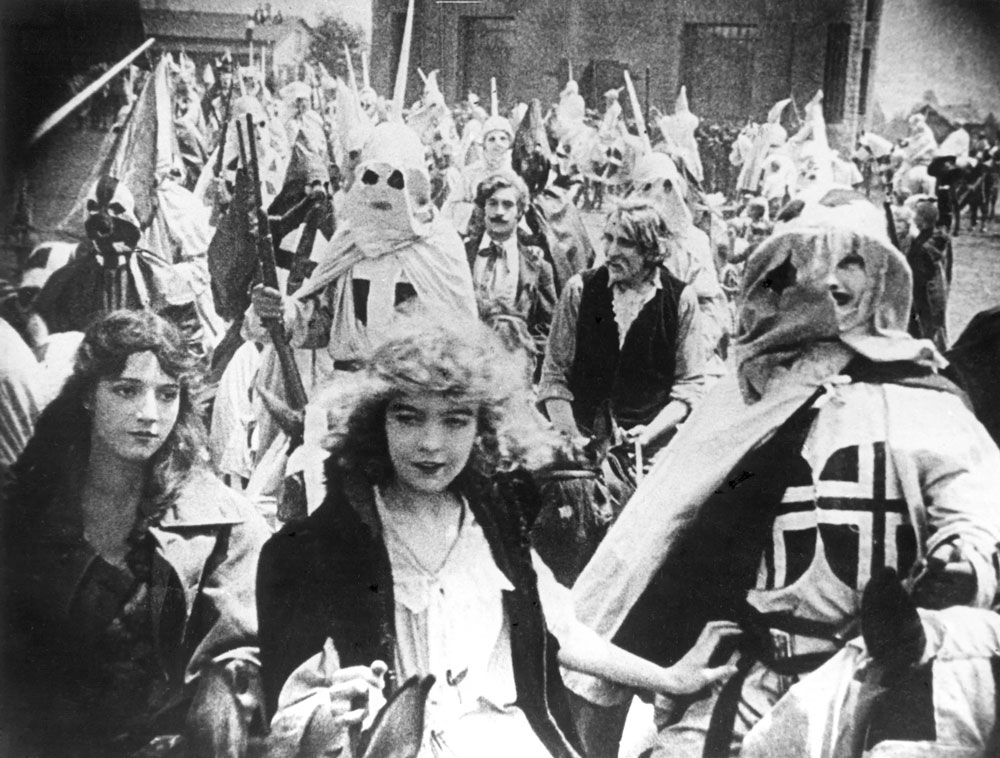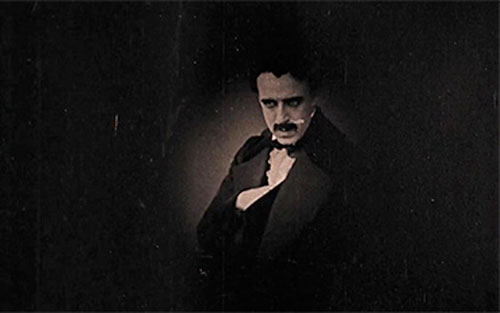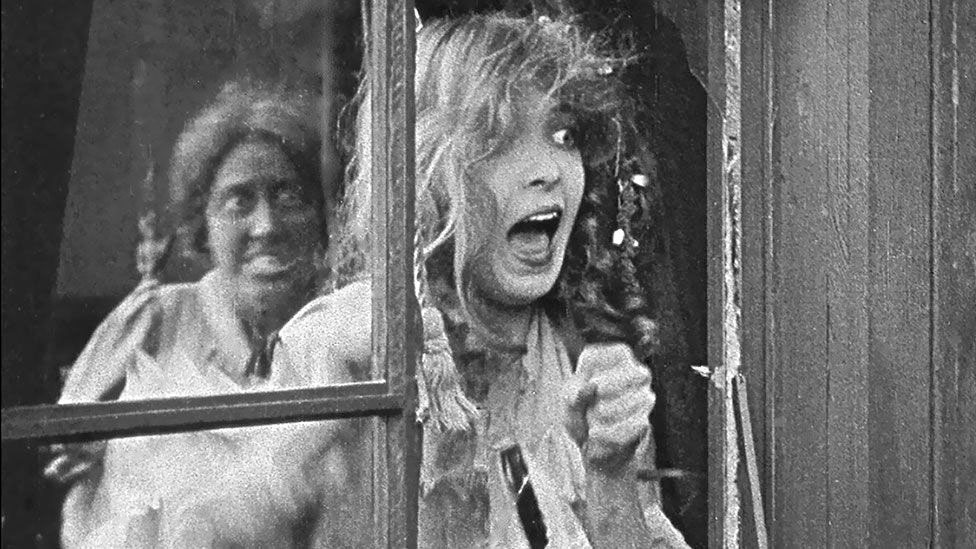The Birth of a Nation was the top-grossing film of 1915…

THE BIRTH OF A NATION, D.W. GRIFFITHS, DAVID W. GRIFFITH CORP., 1915
So I did it, I watched the whole thing. I felt obliged to, as part of my project to watch every top-grossing film since 1913 – 110 years of Summer blockbusters.
This one’s obviously different from the other films on the list. A cause célèbre, a landmark in the emergence of a new, assertive, 20th Century racism, perhaps the most famous revisionist text in history. Everything I’d ever read about The Birth of a Nation led me to believe that it was a brilliant work of art that happened to be ugly and immoral, but that’s not quite it – the film’s certainly an appalling document but, I’m now persuaded, it’s a second-rate film too.
The Birth of a Nation is obviously and in many ways a groundbreaking work – it’s the first 12-reeler (over three hours in length), it’s a complex multi-threaded narrative that sets a family drama against the epic of a country’s self-creation, it’s ambitious, self-confident and totalising.
The back-and-forth between claustrophobic living room and battlefield, rural shack and columned state capitol, tense close-up and chaotic crowd scene – is expansive and grandiloquent. The canvas is the whole history of the United States, the whole of the post-emancipation era. Griffith obviously saw himself as a Tolstoy or a Victor Hugo for the civil war and the reconstruction.

And the film is certainly packed with new storytelling techniques. Griffith obviously had a kind of technical intuition that’s hardly been matched since. The list of techniques we see for the first time here is long: deep-focus shots where action takes place at different depths; huge scenes in which an enormous cast is choreographed with precision; close-ups that expose character and explain motive. Montages that alternate intimate and overwhelming scale. Sets and locations are used cleverly and there’s an extraordinary sensitivity to mise-en-scène – scenes that are constructed with elaborate care at every scale.
There are breakneck moving cameras, multi-camera shots, aerial shots, mind-bending vignettes that isolate action and emotion, superimpositions and double-exposures (the bewildering final sequence that features the devil and Jesus in quick succession depends on several techniques that I feel certain are brand new).
But other aspects of the film – before we even get to its irredeemable nastiness – are odd, old-fashioned, clumsy, maddening even. Acting is uneven, stagey, 19th-Century. Performers sometimes look like they’re barely directed (especially in the big scenes). And before you argue that this is 1915, before the conventions of screen performance had solidified, contrast this film with the sophistication and subtlety of Traffic in Souls, a six-reeler that was 1913’s top grossing movie.

Interleaved with the narrative, there are some fascinating and awkward tableaux, in which scenes from the history of the period – including Lincoln’s assassination – are carefully re-staged, with actors holding static poses for an achingly long time, before the action proceeds, absurdly. These odd, static scenes – reminiscent of tuppenny fairground dioramas – are introduced with portentous intertitles (and every card bears the prominent brand of the Griffith Studio and a big logotype, just in case we forget the source of this brilliance).
And then there’s the nastiness. Beyond the grotesque and unrelieved racism that seems almost impossible to account for even from over 100 years later, we encounter an incoherent and parochial morality, a grim misanthropy masquerading as love of people and nation. The nearest thing to politics here is a kind of domestic-scale feudalism – desperate, scrabbling, landowner revanchism. Some have tried to characterise the Ku Klux Klan idealised in the Birth of a Nation as embodying some kind of benign collectivism; community volunteers turned bad – but this theory is weak and excuses the self-conscious brutality of the group and its programmatic suppression of black people. Their Christianity – which is prominent – is a deformed, dehumanised settler creed.
And, necessarily perhaps, there’s not a single sympathetic character – no one you could think of as the film’s hero or heroine. The hundreds of black actors and extras never escape caricature – they are universally monsters or idiots. The dozens of black-face actors – some made-up in paler tones to represent ‘mulattos’, most required to produce debased or retarded or violent – form a kind of shameful battalion. Lillian Gish, one of Hollywood’s first huge stars, never less than 100% committed to the drama, is asked to yell and howl and make terrifying gestures of fear and hysteria – to embody hatred.

Griffith gives us multiple close-ups in this new style, bringing the camera as close as the optics of the period would permit – and uses vignettes to take us even closer – but the faces he asks us to contemplate are in almost every case bizarrely twisted and tormented – gurning, hysterical, weirdly sexualised, hate-filled, terrified. It’s a bizarre detail, and one I initially doubted (am I over-reading this?). Silent movies obviously require some degree of mugging, emoting, swooning, declaiming – but actors’ faces in this film are either mild and expressionless or wildly over-producing, often animalistic.
Actors are asked to make faces from a mediaeval tableau of hell. It’s one of the most striking aspects of the film, an unavoidable difficulty. The characters we come so close to and spend so much time with repel us. We leave the film indifferent to or hating Griffith’s many principle characters – even the children, even the luminous Gish.
The Birth of a Nation has spawned a whole industry of film analysis, hundreds of books and dissertations and a never-ending stream of newspaper op-eds and features, right up to the present day. When you hear a ‘debate’ about whether slavery was really that bad you’re hearing the continued influence of Griffith’s inversion of antebellum reality.
Worse, its remarkable, out-of-proportion contribution to the culture of Jim Crow reinforced segregation and probably lengthened the battle for black civil rights. At the fringes, the film continues, preposterously, to provide cover for the KKK and its culture of permanent terror. And, as a film, I want to confirm, it does not come close to redeeming itself or its creator and, in fact, is never less than horrifying and infuriating.
- You can rent The Birth of a Nation on BFI Player. I watched it for nothing on YouTube and I’m pretty sure it’s the same print. There are various DVDs.
- I assume the film is out of copyright so I have no idea if any royalties are paid. In the United States it’s been in the public domain since a court ruling in 1975.
- This chapter from Marilyn Fabe’s Closely Watched FIlms catalogues the film’s many narrative innovations.
- Here’s a list of all the top-grossing films since 1913 and here’s my Letterboxd list.
